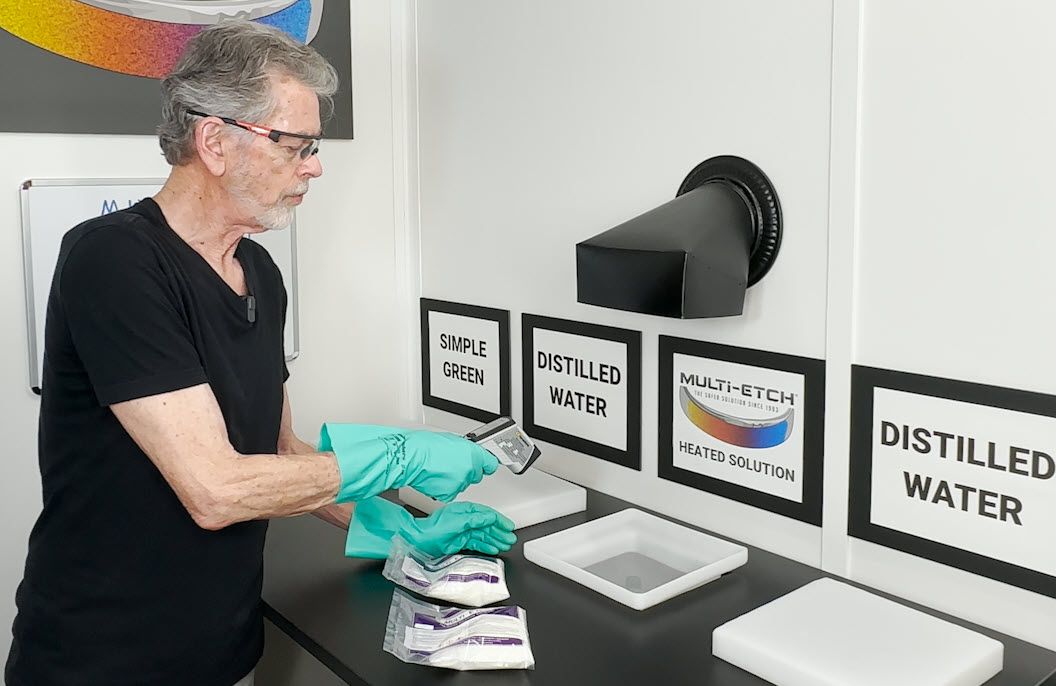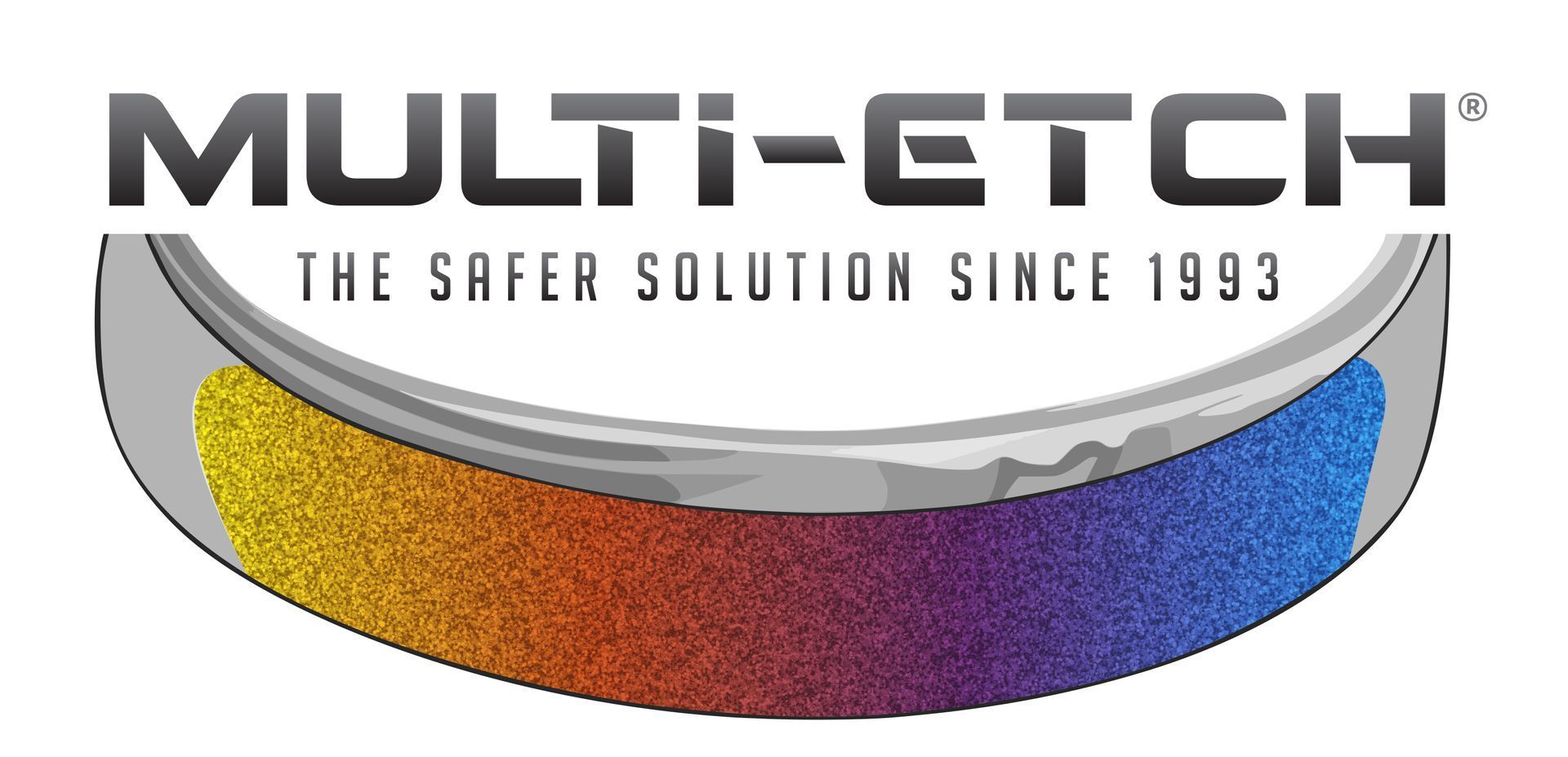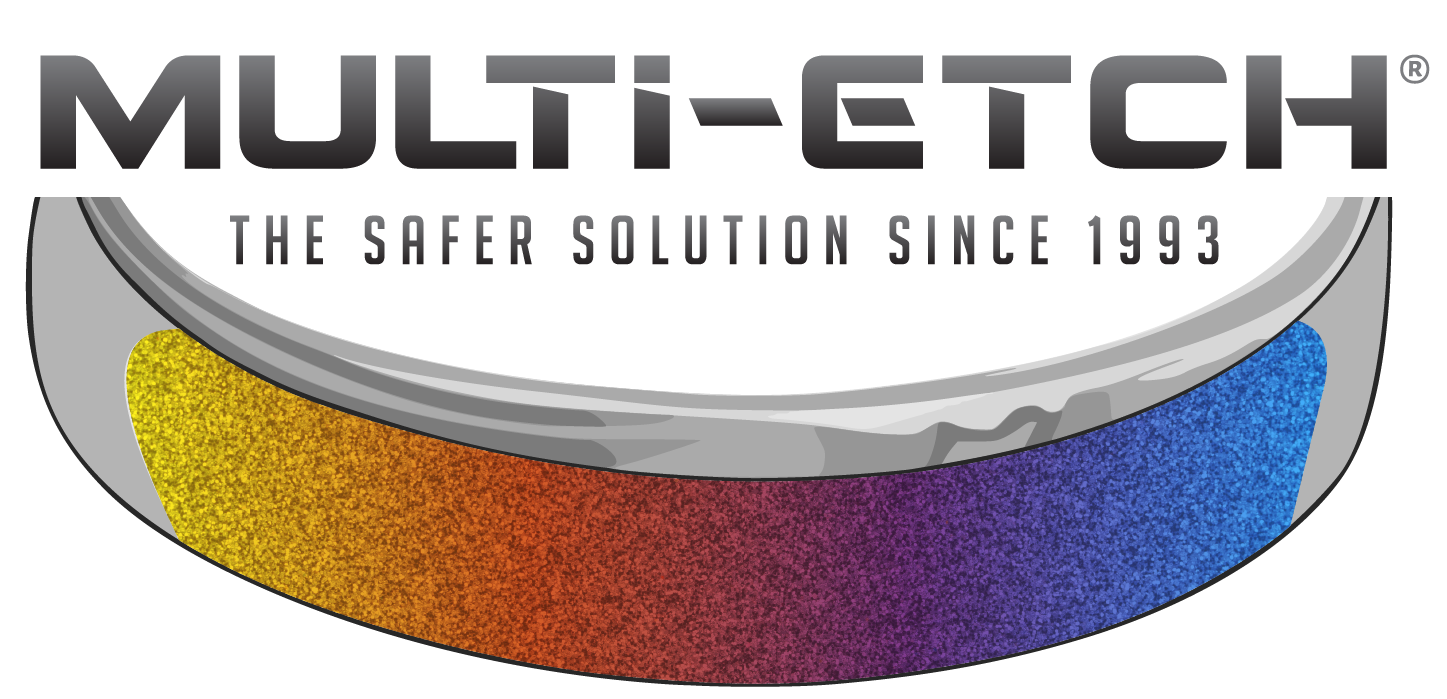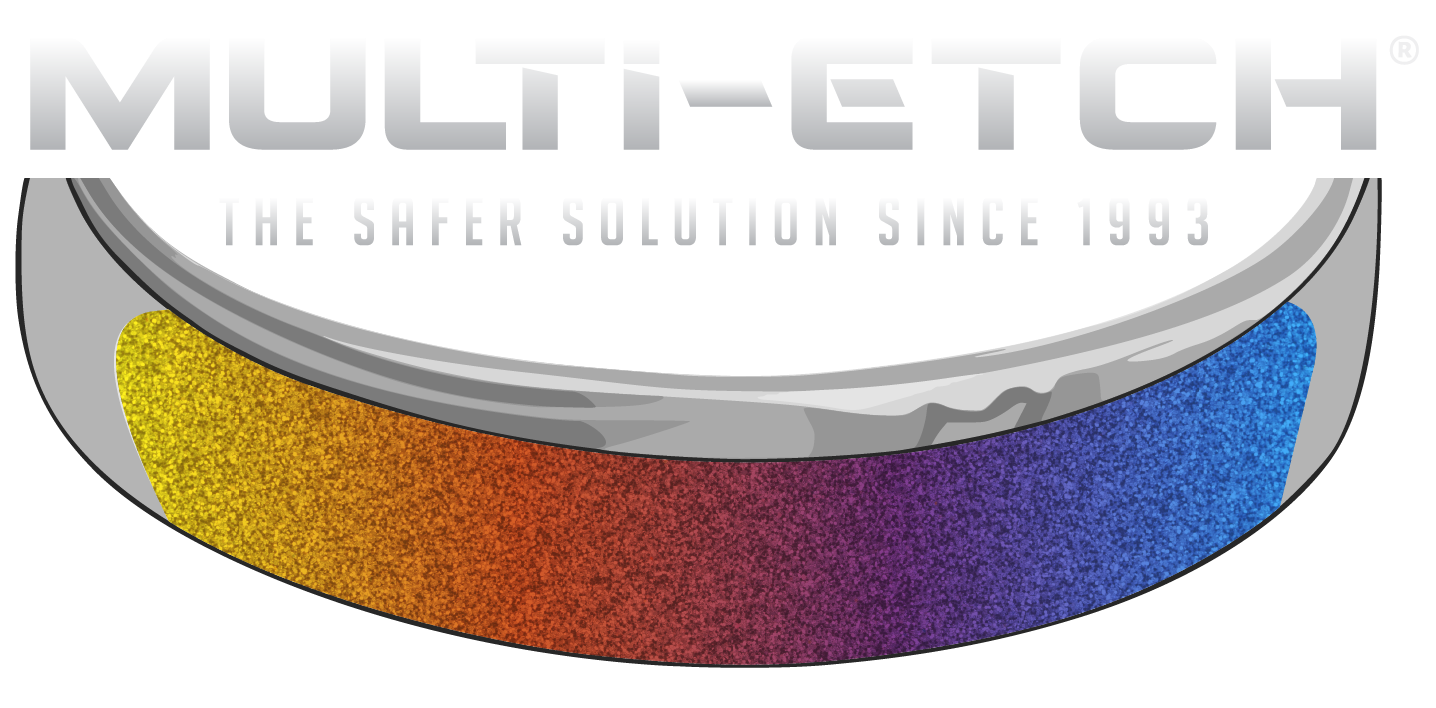HEATED

HEATED MULTI-ETCH
We recommend using Multi-Etch heated because it’s faster. The Multi-Etch bath should be heated to 150-160 degrees F. Multi-Etch works best if it has been mixed up 24 hours before use.
High temperature rated polypropylene tanks and containers work best for large etch tanks. You can also use our High Density Polyethylene Jug to activate your Multi-Etch.
Check out our How to Videos including How to Anodize Titanium.
THE PROCESS
STEP 1 - ACTIVATION
REQUIRED: When you first open your Multi-Etch bags you must activate for initial use. See Activation Instructions below.
STEP 2- SAFETY EQUIPMENT
Put on goggles, gloves, etc. Set up your anodizing station close to where you will be etching. Do this with a fume hood operating, in a very well-ventilated area, or outdoors.
STEP 5 - ANODIZING
Anodize right away: set voltage to zero and ramp up slowly to the desired voltage/color.
Check out How to Anodize Titanium video.
STEP 6 - FINISHING
Rinse and dry to avoid water spots. If you're not ready to anodize, store the etched parts in distilled or deionized water to prevent reformation of the natural oxide layer.
ACTIVATING MULTI-ETCH HEATED USE
Activating Multi-Etch is a one-time required step whether you etch using a heated bath or a room temperature bath. You will receive your Multi-Etch in individual bags in dry powder form. Each bag is used to make 1 gallon of bath (e.g. if you have a 5-gallon tank you will need to mix with 5 bags of Multi-Etch). In order to activate Multi-Etch, you must combine all the powder with distilled or deionized water until completely dissolved.
Activating Steps:
- Pour the distilled or deionized water into the tank or container, one gallon for every bag of Multi-Etch.
- Heat the water to 150 - 160 degrees F.
- While water is heating and before opening the bags, carefully press out any lumps in the powder for easier pouring.
- Check that water has reached temperature of 150 - 160 degrees F. Now cut open and slowly pour the Multi-Etch powder into the water; use a funnel if mixing in a jug. YOU MUST MIX THE ENTIRE PACKAGE.
- Mix the bath using a polypropylene or other appropriate stirrer, or cap and shake the jug vigorously, to help speed up dissolving the powder.
- Mix or shake every few hours to help the solution fully activate. Cover and let stand overnight.
- At the start of a working session be sure to heat bath back up to 150-160 degrees F before you start etching.
We hope these steps helped you use our amazing product! If you had any issues please check out our Frequently Asked Questions or feel free to contact us with any concerns.



